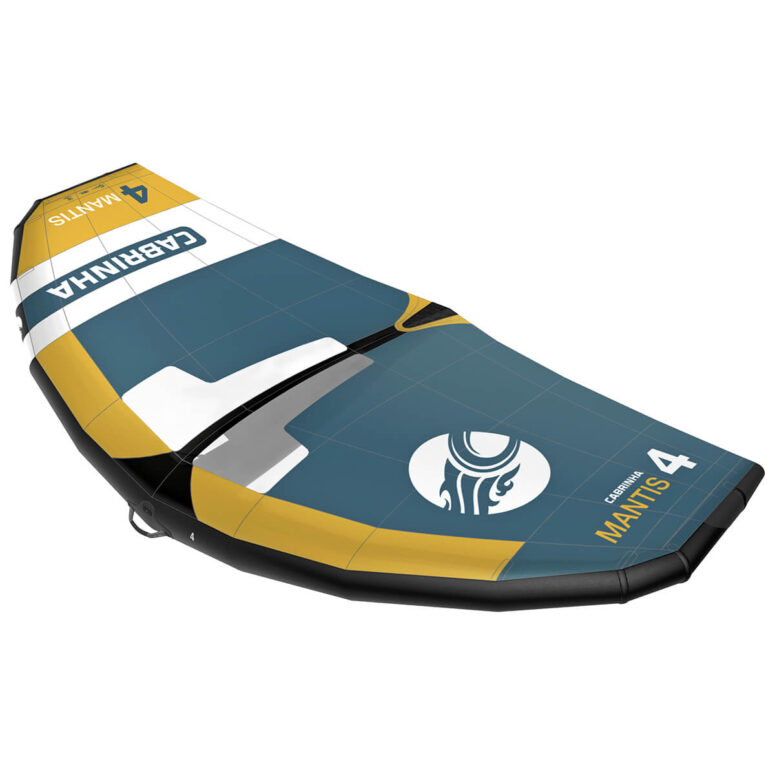

When you purchase gear through links on our site, we may earn a small commission. Here’s why you can trust our tests and our affiliate partner.

Cabrinha’s Mantis has been a firm favorite multi-discipline wing amongst riders from all fields over the last few years, with its simple-to-access power characteristics and balanced handling. With last year’s V3 semi-rigid handle upgrade really refining the user interface, we were eager to see how they’d fettle it further for the fourth version. Sizing this year stretches from 2.5m to 6m in half-meter increments to make quiver building an easy process. It continues with a mid-aspect sail shape throughout the range and with a light amount of dihedral, offering plenty of flat sail surface to the wind.
There’s a comprehensive number of new features and manufacturing changes. This year’s most noticeable design focus perhaps centers around the Nano Ripstop canopy, where an all-new panel layout and seaming distributes the load more evenly across the span of the wing, and a little graduated layer ducktail has been added to the rear of the strut. The strut also has a new convex design, orienting the handles more ergonomically towards the user and meeting the sail surface in the rear half of the strut elegantly to control the profile, which is also an all-new section design. The nose handle is now a fully rigid bolt-on affair, providing excellent control in waves and an anti-rub patch sits behind making sure those knuckles remain un-chafed. The leading-edge tube is comprised of Cabrinha high-tenacity Dacron, with multi-layered material in the center section where the strut joins to keep this area super stiff. This design technique has been carried over into the elbows of the wingtips, where the segments have the harshest angles, to help control any potential flex and combine with beefy TPU bumpers protecting from any potential abrasion here. The window layout has had a rework with a little more height and improved forward vision. Fixtures and fittings are luxurious with single-point inflation on a bayonet-style valve and threaded one-pump valve junctions avoiding the use of cable ties. Twin pipes connect the strut and are both isolatable with clips neatly contained in bespoke silicone covers. Inflation pressure is a robust 10PSI keeping that airframe nice and tight, and it loads a little preload tension into the canopy as it inflates.
So how does it feel in practice? The increase in canopy tension and rigidity in the frame makes the Mantis feel more purposeful than previously, and noticeably improves its upwind efficiency. When a gust hits, rather than bending and absorbing that power, it seems to drive the wing forward and not create downwind momentum and knock you off balance. There’s an overall air of increased composure with the new Mantis, the revised molded front handle really improves flagging control feeling very reassuring and grippy in use, and all three handles bolt on and off if required for transport. Now that the strut has some curve to it, the front of the handle has more clearance and enables you to pistol grip the wing when flagging, improving the level of control available in lighter and onshore situations. The rear handle also has an extended leg at the rear to present itself straight to the rider; rubber bump stops on the handle ends reduce the likelihood of dinging your board.
Cabrinha’s design team certainly haven’t stood still this year, and the new Mantis is definitely a step up from the previous version with improvements in nearly every sector. Accessible and performant in equal measure, it’s a powerful-per-size and simple-to-handle wing in all situations you throw it into.
